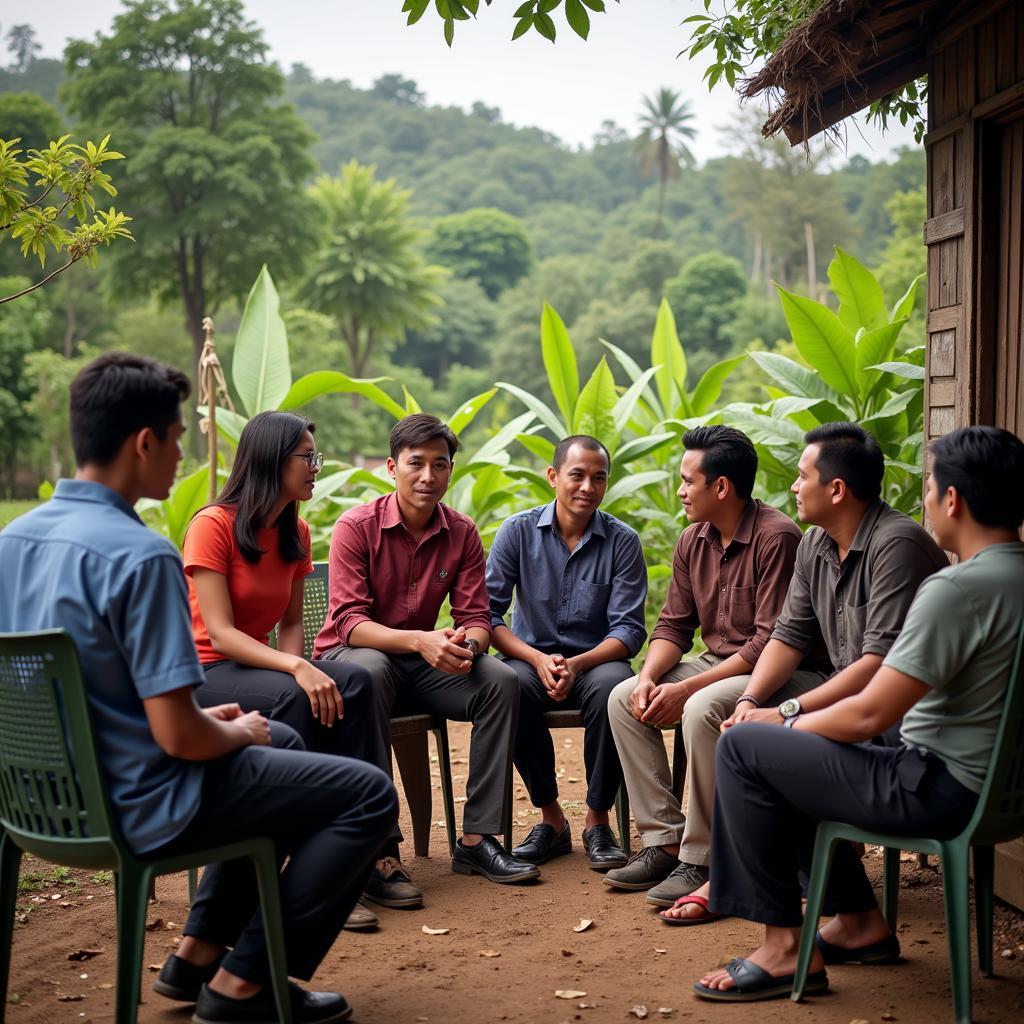ASEAN 2025: Melangkah Maju Bersama encapsulates the shared vision of the Association of Southeast Asian Nations (ASEAN) as it strives towards a more integrated, prosperous, and peaceful region. This ambitious roadmap, adopted in 2015, outlines key priorities and initiatives for ASEAN member states to collectively address in pursuit of a brighter future.
Understanding ASEAN 2025: A Blueprint for Progress
The ASEAN 2025 blueprint represents a collective commitment to strengthen cooperation, enhance connectivity, and foster inclusivity across all sectors. It acknowledges the interconnected nature of the region’s challenges and opportunities, emphasizing the need for a unified approach to achieve shared goals.
Key Pillars of ASEAN 2025: Building a People-Oriented, People-Centered Community
ASEAN 2025 is structured around three pillars, each focusing on crucial aspects of regional development:
1. Political Security Community: Fostering Peace and Stability
This pillar emphasizes dialogue, cooperation, and preventive diplomacy to address traditional and non-traditional security challenges. It aims to enhance regional resilience against threats like terrorism, transnational crime, and natural disasters.
2. Economic Community: Driving Sustainable Growth and Prosperity
At the heart of ASEAN 2025 lies the vision of a highly integrated and competitive economic region. This pillar focuses on promoting trade liberalization, facilitating investment flows, and developing a skilled workforce to enhance economic competitiveness.
3. Socio-Cultural Community: Nurturing a Shared Identity and Social Responsibility
Recognizing the importance of human capital and social development, this pillar aims to strengthen ASEAN’s social fabric. It prioritizes initiatives related to education, healthcare, environmental protection, and cultural exchange to foster a sense of shared identity and responsibility among ASEAN citizens.
ASEAN 2025 in Action: Translating Vision into Reality
Since its adoption, ASEAN 2025 has spurred significant progress across various sectors. Key achievements include:
- Enhanced trade facilitation: The ASEAN Single Window, an online platform for streamlining customs procedures, has been implemented to boost intra-ASEAN trade.
- Improved connectivity: Infrastructure development initiatives, such as the Master Plan on ASEAN Connectivity 2025, are underway to bridge the development gap and enhance regional connectivity.
- Strengthened human capital development: ASEAN has made strides in promoting education and skills development through programs like the ASEAN University Network and the ASEAN Skills Recognition System.
Challenges and Opportunities: Navigating a Dynamic Global Landscape
While ASEAN 2025 has provided a clear roadmap, the region faces ongoing challenges in its implementation:
- Geopolitical tensions: Navigating complex geopolitical dynamics requires ASEAN to maintain its unity and centrality in regional affairs.
- Economic disparities: Bridging the development gap between member states remains crucial for achieving inclusive and sustainable growth.
- Non-traditional security threats: Addressing emerging threats like climate change, cybersecurity, and pandemics requires collaborative efforts and innovative solutions.
Despite these challenges, ASEAN 2025 presents numerous opportunities:
- Growing middle class: ASEAN’s expanding middle class presents a significant market opportunity for businesses and investors.
- Digital transformation: Embracing digital technologies can drive innovation, enhance productivity, and create new economic opportunities.
- Regional integration: Deeper integration within ASEAN can strengthen its global competitiveness and bargaining power.
The Way Forward: Collective Action for a Shared Future
ASEAN 2025: Melangkah Maju Bersama underscores the importance of collective action and shared responsibility in achieving regional aspirations.
“For ASEAN to maintain its relevance and dynamism, we need to continue working together, leveraging our collective strengths, and addressing our common challenges,” notes Dr. Faridah Siddiq, a prominent Southeast Asian economist.
By staying true to the spirit of “Melangkah Maju Bersama,” ASEAN can navigate the complexities of the 21st century and emerge as a global model for regional integration and cooperation.
Conclusion: ASEAN’s Journey of Progress Continues
As ASEAN continues its transformative journey, ASEAN 2025 serves as a beacon, guiding the region towards a future where peace, prosperity, and progress are shared by all.
By fostering deeper integration, embracing innovation, and upholding the values of unity and cooperation, ASEAN can overcome challenges and seize opportunities to realize its full potential. The path ahead requires sustained commitment and collaboration from all stakeholders, ensuring that the spirit of “Melangkah Maju Bersama” continues to drive ASEAN towards a brighter future.

